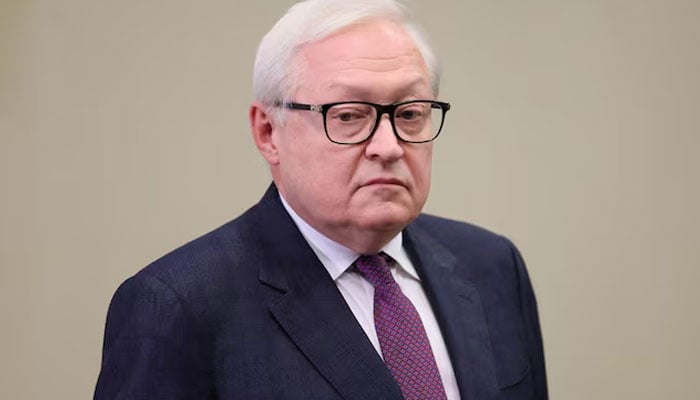Business
Climate ambition gap
字号+ Author:Smart News Source:Health 2025-01-13 19:57:20 I want to comment(0)
AS the world inches closer to catastrophe, all eyes are on the (COP) taking place in Baku, Azerbaijan. The from the COP28 UAE presidency, COP29 Azer presidency, and the United Nations Framework Convention on Climate Change (UNFCCC) executive secretary all made the links between climate action and finance needs. Climate finance was at the heart of the agenda, with parties eager to discuss means of implementation to support delivery of the Global Stock-take outcome. Political engagement to break the gridlock on the New Collective Quantified Goal (NCQG) will be crucial for countries to enhance ambition on (NDC) 3.0 to meet mitigation and adaptation targets. The NDC announcements from the UAE and Brazil are welcome signals from two of the COP troika on their commitments to multilateral climate action. However, the troika countries collectively plan to expand oil and gas production by 32 per cent by 2035 (Brazil 36pc, UAE 34pc, and Azerbaijan 14pc). With a packed agenda and only two weeks to move the needle on critical and contentious issues, it is important to reflect on facts and figures to develop a better understanding of the state of play and what’s at stake. It is important to reflect on facts and figures to develop a better understanding of the state of play and what’s at stake. The report on , released by the developed countries, states that the developed countries provided and mobilised a total of $32.4 billion in adaptation finance in 2022, including a total of $28.9bn in international public finance, an increase of nearly 23pc over 2021 levels and 54pc over 2019 levels. According to the report, significant progress has been made towards doubling adaptation finance from 2019 levels in the first three years of available data, and efforts are on track to reach $40bn by 2025. The International Energy Agency acknowledges the momentum on decarbonisation, with record rollout of renewable energy and a scaling-up of electric vehicles, but expresses concern that the progress is not enough to keep the 1.5 degrees Celsius threshold alive. The IEA finds that governments are still responsible for around $1 trillion of energy sector investment today and will need to increase net-zero investments by about 40pc by 2035. The World Meteorological Organisation report outlines that CO2 concentrations have increased 11.4pc in just 20 years, with the long lifetime of CO2 in the atmosphere locking in future temperature increase. The Organisation for Economic Cooperation and Development reports that in 2022, developed countries provided and mobilised a total of $115.9bn in climate finance for developing countries. This occurred with a delay of two years from the original 2020 target, but public finance accounted for close to 80pc of the total in 2022, and increased from $38bn in 2013 to $91.6bn in 2022. Mitigation continued to account for 60pc of the total and public climate finance grew by 52pc following several years of stagnation. The prepared by the UNFCCC Standing Committee on Finance states that global climate finance flows in 2021-2022 increased by 63pc compared to those in 2019-2020, reaching an annual average of $1.3tr, and tracked adaptation finance increased by 28pc to an annual average of $63bn in 2021-2022. The report acknowledges that more than half of the global climate finance was provided in the form of debt instruments, while grant finance more than doubled in absolute terms but still accounted for only 6pc of the total flow. The report on the NCQG outlines the climate finance needed from the developed countries to developing countries to meet the Paris Agreement goals. It concludes that the developing countries require $1.1tr in climate finance from 2025, rising to around $1.8tr by 2030. Based on these numbers, developed countries should anticipate a funding equivalent of three quarters of the investments needed in developing countries for climate mitigation and adaptation, as well as supporting response to climate-induced loss and damage. Accordingly, the NCQG contribution target for developed countries should be around $0.89tr in 2025, reaching up to $1.46tr by the fifth year of implementation. This would imply a target for around 1.4pc of developed countries’ GDP per year from 2025 until 2030, and then reviewed to make it equivalent to around 2pc of developing countries’ GDP. And finally, the United Nations Environment Programme’s raises alarm with its findings that greenhouse gas (GHG) emissions grew by 1.3pc year-on-year to 57.1 gigatons of carbon dioxide equivalent in 2023. The mitigation pledges for 2030-2035 are not on track and need to be 26 gigatons of carbon dioxide lower for a . Clearly, the ambition gap is widening, the need gap growing and the window of opportunity shrinking. are dangerously high and cash flows dismally small and slow. It is unlikely that COP29 will succeed in issuing a declaration that satisfies everyone. However, the goal of 1.5 still remains within reach but delay in action is not an option. For Pakistan, the current temperature trends mean an increase in climate-induced hazards, more loss and damage, and a higher risk of sinking deeper into a debt and poverty trap. It is time to reconcile with reality and accept the fact that total reliance on external support for succour is not a gamble that the country can afford. Pakistan needs to reset its priorities and align them with the national security policy, making geo-economics and governance reforms its top action agenda. Now is perhaps the last opportunity for making long-term strategic choices to prepare the country for a future with a new socioeconomic and political climate.
1.This site adheres to industry standards, and any reposted articles will clearly indicate the author and source;
 Related Articles
Related Articles-
PHC extends protective bail to Gandapur till Dec 17
2025-01-13 18:26
-
پاکستان نے 5 سالہ بی ڈی ایس پروگرام کے نفاذ میں ایک سال کی تاخیر کردی ہے۔
2025-01-13 18:11
-
پاکستان نے 5 سالہ بی ڈی ایس پروگرام کے نفاذ میں ایک سال کی تاخیر کردی ہے۔
2025-01-13 17:58
-
پاکستان نے 5 سالہ بی ڈی ایس پروگرام کے نفاذ میں ایک سال کی تاخیر کردی ہے۔
2025-01-13 17:24
 User Reviews
User Reviews Recommended Reads
Recommended Reads Hot Information
Hot Information- Aaqib named white-ball head coach until Champions Trophy
- پاکستان نے 5 سالہ بی ڈی ایس پروگرام کے نفاذ میں ایک سال کی تاخیر کردی ہے۔
- پاکستان نے 5 سالہ بی ڈی ایس پروگرام کے نفاذ میں ایک سال کی تاخیر کردی ہے۔
- پاکستان نے 5 سالہ بی ڈی ایس پروگرام کے نفاذ میں ایک سال کی تاخیر کردی ہے۔
- From The Past Pages Of Dawn: 1974: Fifty Years Ago: Trade with India
- پاکستان نے 5 سالہ بی ڈی ایس پروگرام کے نفاذ میں ایک سال کی تاخیر کردی ہے۔
- پاکستان نے 5 سالہ بی ڈی ایس پروگرام کے نفاذ میں ایک سال کی تاخیر کردی ہے۔
- پاکستان نے 5 سالہ بی ڈی ایس پروگرام کے نفاذ میں ایک سال کی تاخیر کردی ہے۔
- UK govt plans to ban new coal mines
 Abont US
Abont US
Follow our WhatasApp account to stay updated with the latest exciting content













